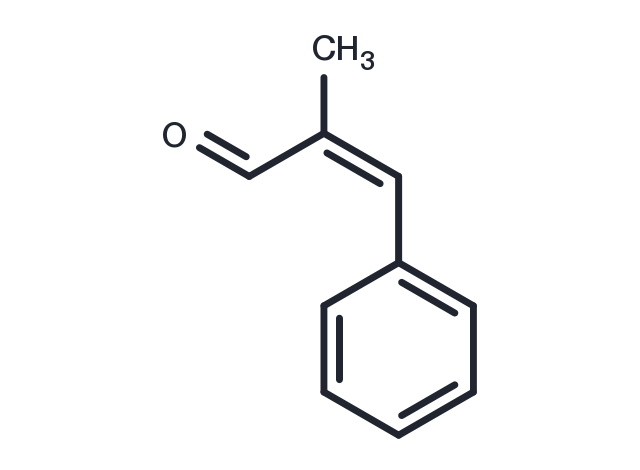Powder: -20°C for 3 years | In solvent: -80°C for 1 year


alpha-Methylcinnamaldehyde is an α-substituted derivative of Cinnamaldehyde, which can be used as an inhibitor of mushroom tyrosinase.

| Pack Size | Availability | Price/USD | Quantity |
|---|---|---|---|
| 25 mg | Inquiry | $ 1,520.00 |
| Description | alpha-Methylcinnamaldehyde is an α-substituted derivative of Cinnamaldehyde, which can be used as an inhibitor of mushroom tyrosinase. |
| Synonyms | Z-alpha-Methylcinnamaldehyde |
| Molecular Weight | 146.19 |
| Formula | C10H10O |
| CAS No. | 66051-14-7 |
Powder: -20°C for 3 years | In solvent: -80°C for 1 year
You can also refer to dose conversion for different animals. More
bottom
Please see Inhibitor Handling Instructions for more frequently ask questions. Topics include: how to prepare stock solutions, how to store products, and cautions on cell-based assays & animal experiments, etc.
alpha-Methylcinnamaldehyde 66051-14-7 alpha Methylcinnamaldehyde Z-a-Methylcinnamaldehyde a-Methylcinnamaldehyde Z-α-Methylcinnamaldehyde α-Methylcinnamaldehyde Z-alpha-Methylcinnamaldehyde alphaMethylcinnamaldehyde inhibitor inhibit
